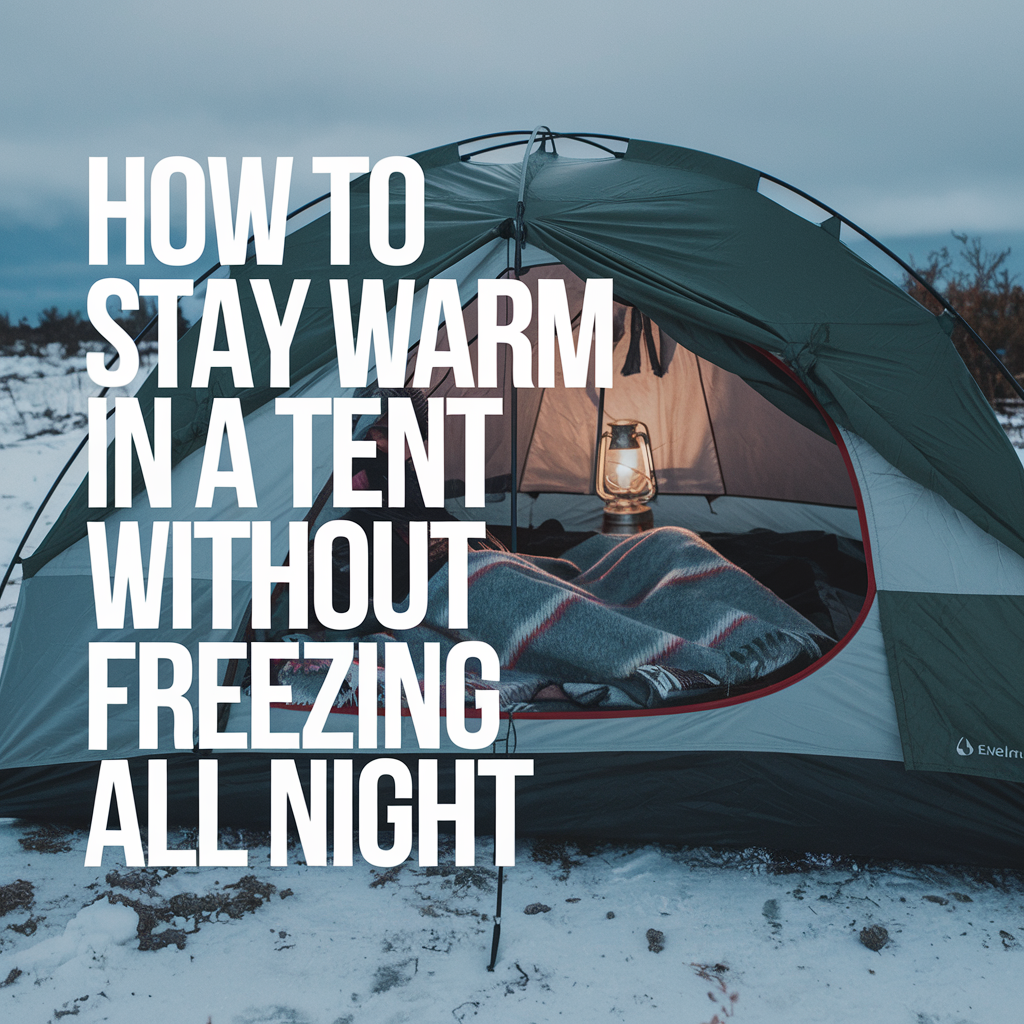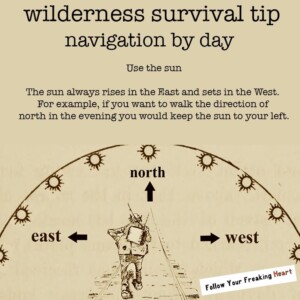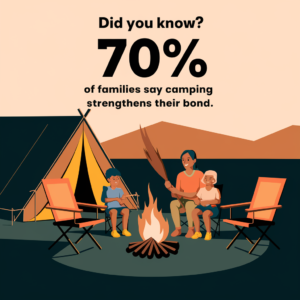
Why Knowing the Difference Matters in the Field
When I first got into survival and bushcraft, I thought any tough-looking knife would do the job. I grabbed a big, heavy “tactical” blade that looked like it could chop down a tree—but the first time I tried to carve tent pegs and feather sticks with it? Total frustration.
That trip taught me the hard way that not all outdoor knives are built for the same purpose. What works in a bug-out bag or an emergency survival situation might be a total nightmare when you’re trying to build shelter or start a fire with finesse.
If you’re building your kit or upgrading your gear, you’ve probably asked it too:
What is the difference between a survival knife and a bushcraft knife?
I’ve used both—extensively. In this guide, I’ll walk you through the key differences from real experience so you can choose the right blade for your mission. If you want to see the actual knives I use and trust, check out my full guide on bushcraft knives that actually work for a tested breakdown.

What Is a Bushcraft Knife Designed to Do?
A bushcraft knife is a precision tool. It’s built for control, not brute force. When I’m in the woods working with my hands—building traps, carving tools, or starting a fire—I want something that moves like an extension of my hand. That’s exactly what a bushcraft knife is made for.
What bushcraft knives are meant for:
- Carving notches for traps or tent pegs
- Feathering sticks for fire prep
- Scraping bark or fatwood
- Food prep in the field
- Fine slicing and tool crafting
- Working with a ferro rod to light a fire
They usually fall in the 4 to 6-inch blade range, with a comfortable handle and a solid 90-degree spine to throw sparks. My go-to for tasks like these? The BPS Adventurer. It’s carbon steel, full tang, and simple—in the best way. No bells, no gimmicks, just a knife that’s been sharpened by real use.
If you’re planning to build, craft, and survive with skill, a bushcraft knife is your workhorse. Next up—I’ll break down what makes a survival knife different, and when I reach for one instead.

What Is a Survival Knife Built For?
When things get ugly—fast—I reach for my survival knife. These blades are made for power, durability, and versatility, not finesse. Think of a survival knife like a heavy-duty multitool that just happens to be a blade first. It’s what I pack when I expect the unexpected and need to be ready for anything.
What survival knives are made for:
- Batoning thick wood for fire or shelter
- Prying or digging when no shovel is available
- Breaking glass or barriers in emergency situations
- Self-defense in wilderness or urban settings
- Cutting cordage, straps, belts, and synthetic gear
- Handling rough utility tasks you wouldn’t want to risk on a finer blade
These knives often have longer blades (6–10 inches or more), thicker steel, and aggressive profiles. Some come with built-in extras like firestarters, sharpeners, or even sawbacks. A perfect example? The Mossy Oak Tactical Bowie—a monster of a blade that’s surprisingly balanced for its size and budget-friendly too.
Another favorite of mine is the DC53 Steel Knife. It’s thick, heavy, and can take an absolute beating. This thing isn’t afraid of hard use and comes with a cerium firestarter that I’ve sparked up in snow and sleet more than once.
In short, a survival knife is what you want when you’re getting out of danger or enduring chaos. Bushcraft knives are for staying put and living smart. Survival knives are for getting through hell in one piece.

Blade Differences: Length, Thickness, and Steel Type
When you put a bushcraft knife next to a survival knife, the differences jump out—especially once you’ve used both in the field. Each one is designed around a purpose, and the blade tells the story.
Blade Length
- Bushcraft knives usually sit in the 4–6 inch range. This gives you maximum control for carving, notching, and detailed work. I can use the tip precisely, the belly for slicing, and the spine for scraping.
- Survival knives lean longer—6–10 inches or more. You need the extra reach and leverage for splitting wood, defending yourself, or chopping through brush.
Blade Thickness
- Bushcraft blades are usually thinner and more refined. They still need strength (full tang is a must), but they’re not designed for smashing through logs.
- Survival knives are often thicker—sometimes 5mm to 6mm—so they can handle impact, prying, or even digging in a pinch.
Steel Type
- Bushcraft knives often use high carbon steel (like 1095 or DC53). It holds an edge well and throws sparks with a ferro rod. Downside? Needs more maintenance or it’ll rust.
- Survival knives may use carbon or stainless steel. Stainless is easier to care for, especially in wet environments, but may not spark as well or hold an edge quite as long.
The BPS Adventurer uses carbon steel and has a classic Scandi grind—perfect for clean wood carving.
Meanwhile, the DC53 Steel Knife is a beast at 6mm thick and designed for more rugged survival tasks.
Bottom line? The blade tells you everything. If it’s sleek, controlled, and razor-precise—it’s built for bushcraft. If it’s bulky, overbuilt, and looks like it could cut through a car door—it’s survival-ready.

Handle and Grip: What Feels Better for Extended Use?
This is one of those things you don’t think about—until your hand’s blistered halfway through camp chores. The handle on your knife might seem like an afterthought, but if you’re using that blade all day, it needs to feel like it belongs there.
Bushcraft Knife Handles
Bushcraft is about control and finesse, so comfort is king. A bushcraft knife handle should let you:
- Choke up on the blade for detailed carving
- Use different grips for whittling, feathering, or fire prep
- Avoid hot spots or blisters with prolonged use
Materials vary—wood, micarta, and rubberized grips are all popular. My BPS Adventurer has a smooth, rounded handle that lets me work for hours without fatigue. It’s not flashy, but it feels right in the hand.
Survival Knife Handles
Survival knives tend to focus more on grip security over comfort. You might be swinging, batoning, or prying—so the handle has to lock into your palm even when your hands are wet, cold, or shaking.
Grippy textures, finger grooves, and lanyard holes are all features you’ll find on knives like the Mossy Oak Tactical Bowie. It’s not as “comfortable” for fine detail work, but in a high-stress survival situation, it’ll stay put in your hand—and that matters.

Sheaths and Carry: How You’ll Use It in the Real World
Let’s be honest—a great knife with a bad sheath is just a liability. You’ll end up leaving it in your pack, fumbling for it when you need it, or worse—dropping it somewhere in the woods.
Bushcraft Knife Carry Options
Bushcraft knives usually come with leather or Kydex sheaths designed for belt carry. I prefer bushcraft blades that ride a little lower on the hip and allow easy access whether I’m standing, crouching, or kneeling by the fire.
The BPS Adventurer comes with a quality leather sheath that fits snug and wears in nicely over time. For bushcraft, I want something that stays close but doesn’t get in the way when I’m gathering wood or carving under pressure.
Survival Knife Sheath Features
Survival knife sheaths often have extras—firestarter loops, integrated sharpeners, MOLLE compatibility, even leg straps for high-mobility setups. The Mossy Oak Bowie includes both a sharpener and firestarter in the sheath, which makes it great for throwing in a bug-out bag or car kit.
A good survival knife sheath doesn’t just carry your blade—it carries your contingency plan. And when you’re in an actual emergency, that’s not something you want to skimp on.

Which Knife Do I Carry More Often (And Why)?
If I had to guess, I reach for my bushcraft knife 70% of the time. Why? Because most of my time outdoors is spent prepping camp, starting fires, carving, and handling tasks that need precision—not brute force. I’m not always in survival mode. I’m in “stay comfortable, stay prepared” mode.
That said, I always have a survival knife nearby—either in my vehicle kit or tucked into my bug-out bag. When the job calls for heavier tasks, I want a blade that’s ready to take abuse.
My go-to daily carry:
- BPS Adventurer – It’s reliable, comfortable, easy to maintain, and does 90% of what I need in the woods.
What I pack for harsher environments or unknown conditions:
- DC53 Steel Knife – This thing is a tank. Great for tough terrain, extended trips, or unpredictable weather.
My loan-out or vehicle knife:
- Mossy Oak Tactical Bowie – Affordable and big enough to handle just about anything. Great for tossing into a glovebox or backup kit.
It all comes down to what I expect from the trip. Day hike or firewood run? Bushcraft. Storm rolling in or multi-day remote camp? I want both. One on my hip, one in my pack.

Can One Knife Do It All? The Honest Truth
This is the golden question—and here’s my honest take after years in the field: yes and no.
You can find knives that do both survival and bushcraft fairly well. But in trying to do everything, most of them don’t excel at either.
The trade-offs look like this:
- A longer, thicker survival knife might be great for batoning and hard use, but it’s going to suck for feathering sticks or carving trap notches.
- A compact bushcraft knife might make you feel like a woodcraft wizard—but try prying frozen wood apart or defending yourself with it, and you’ll feel underpowered.
There are hybrid blades out there that try to bridge the gap. Some are pretty decent. But what I’ve learned is this: two solid knives—one for finesse, one for power—will always beat one do-it-all blade.
So can one knife do it all? Maybe. But if you really care about performance and staying ready, the better question is:
Why would you let one knife do all the work when two do it better?

Pick the Knife That Fits Your Mission
By now, you probably get it—a bushcraft knife and a survival knife are built for two different jobs. Could you use one in place of the other in a pinch? Sure. But once you’ve spent time outdoors doing real work—building camp, making fire, processing wood, prepping food—you’ll start to feel the difference instantly.
If I’m going out to spend time in the woods, I want a knife that helps me live comfortably and efficiently. That’s a bushcraft knife. Something like the BPS Adventurer feels natural in the hand and works like it’s meant to be there.
But if the forecast calls for chaos, or I’m packing an emergency kit for my truck or bug-out plan, I’m not taking chances. I’m grabbing my DC53 Steel Knife or tossing in the Mossy Oak Bowie. These are survival-first tools meant for serious, high-stress conditions.
When people ask me, “What is the difference between a survival knife and a bushcraft knife?” the answer is simple:
- Bushcraft = live with the land
- Survival = fight through the chaos
So don’t pick based on marketing or how cool it looks. Pick the knife that fits your actual needs. The right one will feel like a part of you. And if you want more real-world-tested knife picks, check out the full write-up:
Bushcraft Knives That Actually Work.
That list could easily save you time, money, and frustration in the field.

As an Amazon Associate we earn from qualifying purchases through some links in our articles.



